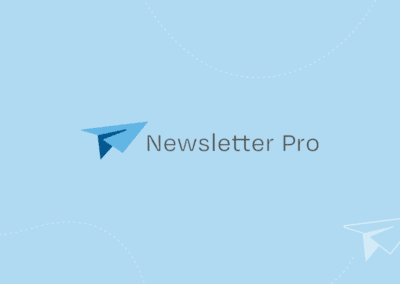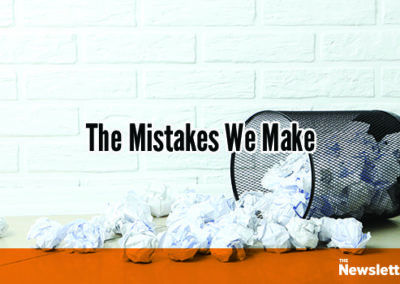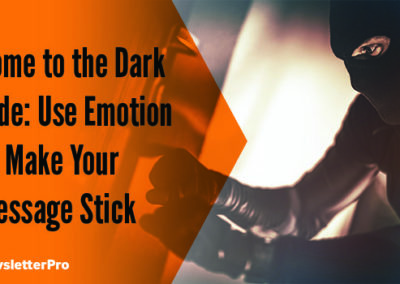Microsoft conducted a widely publicized study a few years ago that concluded the average American’s attention span was now only 8 seconds — less than a goldfish.
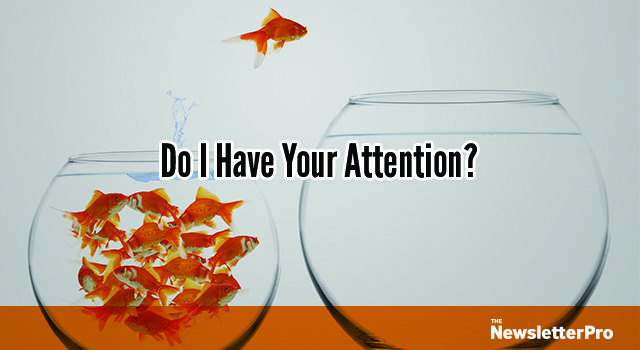
The idea that no one can focus anymore has made its way into all areas of business and life. We now read 140-character tweets. And apparently, no one will read long-form sales letters or watch a video longer than 5 minutes.
I call b.s. on all of it.
A Short Attention Span Isn’t The Problem
 I don’t think the problem is a decreased attention span. Recently, I interviewed a good friend of mine, Craig Simpson from Simpson-Direct. This is one of the best direct mail firms on the planet. He has a 90-minute video that people are consuming, as well as a 60-plus-page sales letter that outperformed each and every one of the shorter versions of the same letter.
I don’t think the problem is a decreased attention span. Recently, I interviewed a good friend of mine, Craig Simpson from Simpson-Direct. This is one of the best direct mail firms on the planet. He has a 90-minute video that people are consuming, as well as a 60-plus-page sales letter that outperformed each and every one of the shorter versions of the same letter.
The problem is, we have an infinite number of channels on the dial to choose from.
Back when TV first came out, people had just a handful of channels they could tune in to. If you didn’t like what was on, you had two additional choices on TV. Now, you have 200 choices, plus what’s on the DVR, Netflix, Amazon Prime, Hulu, and YouTube! I could go on, but you get the point.
Don’t Bore Your Audience
 With everything to choose from, the real problem is boring content. If you bore me or don’t provide me value, it is easy to simply change the channel. Odds are, I can find something that will amuse me, which means you have a very short period of time to entertain me. Otherwise, I’m off to the next option.
With everything to choose from, the real problem is boring content. If you bore me or don’t provide me value, it is easy to simply change the channel. Odds are, I can find something that will amuse me, which means you have a very short period of time to entertain me. Otherwise, I’m off to the next option.
You can actually see the infinite channel theory working in the marriage stats for millennials. Married millennials drop to a mere 70 percent of the generation. Compare that to 91 percent for baby boomers. These millennials have infinite channels. If one person doesn’t work out, they can simply swipe right on a new one.
Because of infinite channels, marketing has changed as well. Fifteen years ago, I ran across a this theory: If you don’t get a good response with your first marketing pieces, any additional follow-up is unlikely to yield any additional results.
Today, because it is so difficult to grab someone’s attention, you may not get any response until the second or third attempt. It requires a much larger and more complicated campaign to break through the noise.
We recently ran a promo that I thought had bombed. We got a single response from the first step of the campaign. But, we ran the additional campaign steps, and ultimately, the campaign turned from a dud to a profitable campaign. In fact, we are planning on repeating the campaign in 60 days.
How To Capture Someone’s Attention
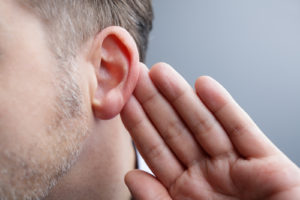 When marketing to prospects, what is working right now is not that dissimilar to what worked 20 years ago.
When marketing to prospects, what is working right now is not that dissimilar to what worked 20 years ago.
First, you can’t be boring. If you start talking about the latest whiz-bang scientific report, you’re done. Boring never works. We’ve seen that a combination of offline and online marketing works the best.
If we generate a lead online, we want to bring them offline ASAP. If that lead is generated offline, we want to connect and bring them online immediately. We want the prospect to get our message in multiple forms of media.
An associate of mine, Perry Belcher, once said that we live in the single most difficult time to get someone to make a first-time purchase. This is caused by both infinite channel issues and trust. That’s the bad news.
The good news is, we live in the easiest time to get someone to make their second purchase with you. Getting someone to buy from you the first time is one of the most expensive things any business does. But once someone decides to trust you, it is so much easier to get them to shop with you over and over again.
All you have to do is do what you say you’re going to do. Remind them who you are, what you do, and that you’re still in business.
The more time a person spends with you, your media, and your products or services, the greater influence you have with them. If you want to sell more tomorrow, remember that they have an infinite number of channels to choose from. In the end, it is your job to entertain them, educate them, and capture their attention long enough to sell to them.
For more information about capturing your audience’s attention with personalized marketing, request a complimentary copy of our book, The Ultimate Guide to Newsletters.




